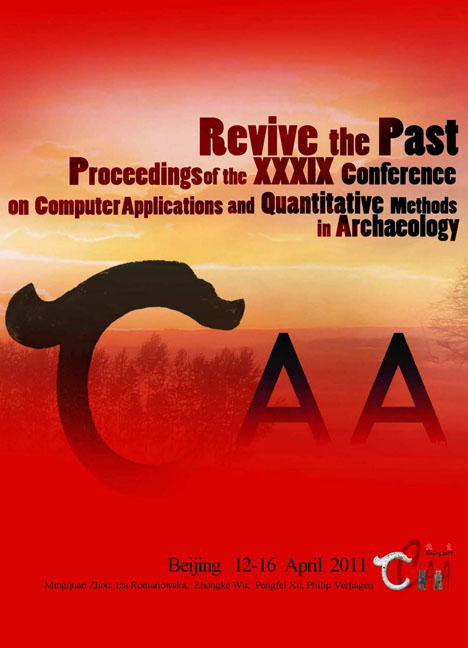 Revive the Past
Revive the Past Mapping Prehistoric Building Structures by Visualising Archaeological Data and Applying Spatial Statistics: a Case Study from Taiwan
Published online by Cambridge University Press: 23 June 2021
Summary
Abstract:
This paper aims to examine the presence of building structures based on the distribution of features and artefacts from a Neolithic site located in Northeast Taiwan: the site of Wansan. Three steps of analysis are conducted. First, we tried to visualize where the buildings might have been located through an analysis of the distribution of postholes. Then, we superimposed maps of the posthole groups, burials, ceramic and lithic artefacts in order to identify possible spatial patterns. Finally, we applied spatial statistics, the Global Moran's I and the Anselin Local Moran's I, to further attest and analyse the presence of these possible buildings. We argue that by using GIS not only different maps can be superimposed easily to facilitate visualisation but also various spatial statistics can be conducted to re-evaluate and confirm the results of the visual analysis which can help archaeologists to construct better interpretation.
Key Words: Spatial Statistics, GIS, Intra-site Spatial Analysis, Neolithic, Taiwan
Introduction
This paper examines the possible presence and range of house structures based on the distribution of features and artefacts from a Neolithic site located in Northeast Taiwan - the site of Wansan. Due to the lack of direct architectural remains in Taiwan, archaeologists are reluctant to visualise the presence of building structures, which limits the types of questions archaeologists can ask. However, we believe that archaeologists can do more than hypothesise about the existence of houses. They can identify where the houses might be located and draw boundaries between houses by explicitly examining the spatial distribution of postholes and other features and artefacts.
Since houses are the main living quarters they are the places where archaeologists can learn about early people's daily lives. Accordingly, where houses are located constitutes a focus of research if archaeologists intend to explore early people's daily lives. Most research relies on the presence of architectural structures together with the associated artefact analysis to locate the household units (e.g. Ciolek-Torrello 1989, Gnivechi 1987, Kramer 1982, Leventhal and Baxter 1988, Lowell 1988, Samuel 1989, Smith 1989, Tourtellot 1988). However, most architectural remains are not well preserved in tropical countries such as Taiwan. In order to explore the presence and content of this analysis unit, archaeologists should combine multiple lines of evidence to extrapolate where houses might be located.
- Type
- Chapter
- Information
- Revive the PastProceedings of the 39th Conference of Computer Applications and Quantitative Methods in Archaeology, pp. 296 - 306Publisher: Amsterdam University PressPrint publication year: 2012


